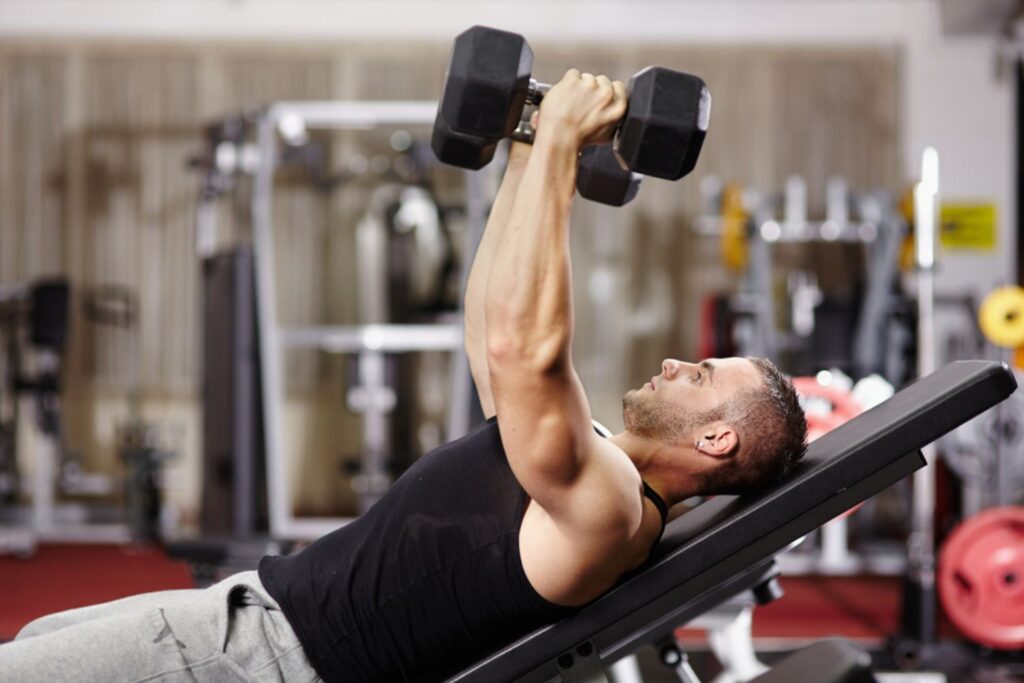STARTING A WORKOUT program for the first time can be equal parts excitement and confusion.
The good news is it’s almost automatic that you’ll immediately begin to gain muscle as a beginner, no matter which exercises you throw together. The bad news, however, is that with a limited understanding of training styles, any haphazard mashup of exercises performed for no rhyme or reason will bring most of your early gains to a quick halt once you’re outside of that early training honeymoon phase. You’ll be much more likely to hit the dreaded training plateau.
Men’s Health fitness director Ebenezer Samuel, C.S.C.S. says the best plan to keep making gains after your earliest training experience is to have a plan—and to learn how certain exercises will improve your movement over the long term.
“If you can create a plan, and if you have an idea of exactly what you want to list, there’s so much potential here,” Samuel says. “When you get started in the gym, you’re going to pick up muscle fast, you’re going to pick up strength fast, because you’re going to learn all the pieces that you need to early on.”
To start you off, here are four effective exercises every beginner should include in their workouts. These aren’t the most popular moves you’ll see other newbies repping out right away, but including them in your training will help to lay the foundation for improving every movement as you progress along your fitness journey.
4 Essential Beginner Exercises
Incline Row
To become stronger over time, one movement you’re going to need to master will be learning how to squeeze your shoulder blades. One of the best ways to reinforce that movement is through rows.
Each row rep requires you to squeeze your shoulder blades. Rowing promotes better posture—by squeezing your shoulders blades as you pull your shoulders back and pulling your chest—which in turn is going to pay off down the road by helping improve your form with your biceps curls, shoulder press, or just about any move in which you’ll be required to squeeze your shoulder blades.
Why the incline row over any other row variation? Samuel likes that when you placing your chest on a bench pad, you’ll eliminate any excess lower back stress you may get from traditional barbell or dumbbell rows. Here, you can we really emphasize the focus on squeezing the shoulder blades rep after rep.
For rowing rookies, you can perform these up to three times a week, with three sets of eight to 10 reps working best.
Romanian Deadlift
This variation of the deadlift will help you focus on two specific exercise elements.
First, all of us have to learn how to pick something heavy off the ground correctly.
The RDL also highlights another key movement pattern you’ll use not just in the gym, but in everyday life: the hip hinge. Don’t think of hip hinging as simply bending at the waist; instead concentrate on pushing your butt back as you bend forward. This engages the hamstrings and glutes, which will go a long way toward helping you pack on some posterior muscle and strength. This is one of the reasons why it might actually be more beneficial to begin with RDLs than the traditional deadlift.
“It’s a really highly personal way to start to activate those hamstrings and glutes,” Samuel says. “And once you’ve mastered this, you’ll be able to graduate to trap bar deadlifts, and a lot more powerful lifts—but you’ll always keep the Romanian deadlift in your routine.”
Farmer’s Carry
This movement continues our list of power-generating patterns that help us pick up heavy weights—isn’t that one of the reasons why you joined a gym?
You’re going to pick up the largest load that you can handle and just walk (or even march in place) for about 30 to 40 seconds. The benefit of this move is that farmer’s carries are prepping you to lift heavy weights in any setting, while also teaching you how to manage heavier and uncomfortable loads.
Farmer’s carries are also going to help your posture—you’ll work on keeping the abs tight, work on your grip strength—all of this will translate into better pullups, better curls, pretty much better overall performance in the weight room. Another great benefit: You can do these almost anytime, any workout.
Parallel Pause Biceps Curl
This final exercise isn’t just about picking up weights, it’s about picking up the weight and also creating a deeper focus on the muscle—otherwise known as establishing a mind-muscle connection.
This exercise variation forces you to curl all the way up, rotating your pinky toward the ceiling (supination), which will help you get a good squeeze before lowering until your forearms are parallel with the floor, holding this for a moment before lowering (creating more time under tension, another important muscle-building principle).
Mastering these fundamentals will carry over into virtually every other exercise you will do. And sticking to this plan will ensure gains to come. “If you’re just getting started, it’s a lot better than just going to the gym and having no clue what you’re going to do,” Samuel says. “And on top of that, you’ll look like you know what you’re doing in the gym.”
This article was first published on Men’s Health US.
















